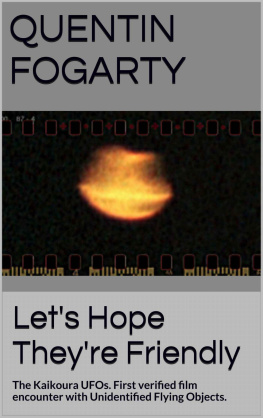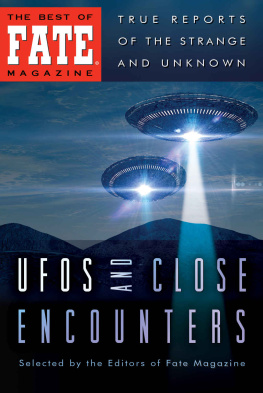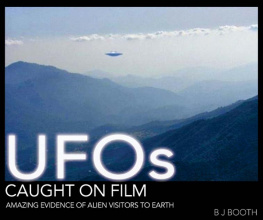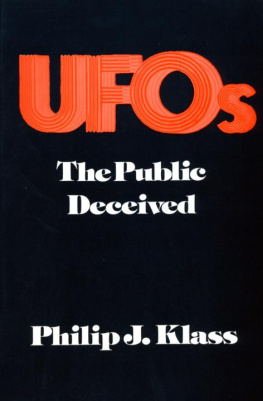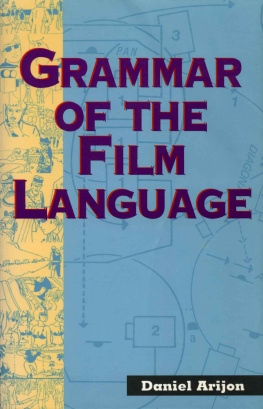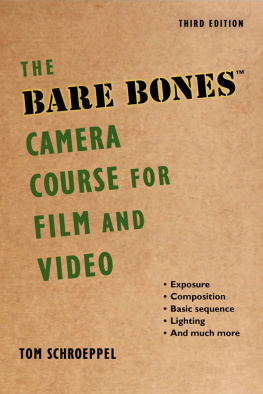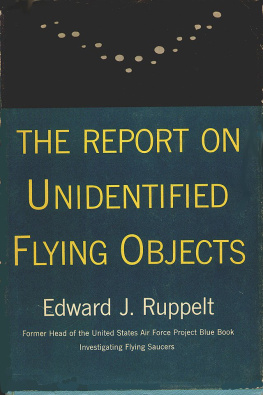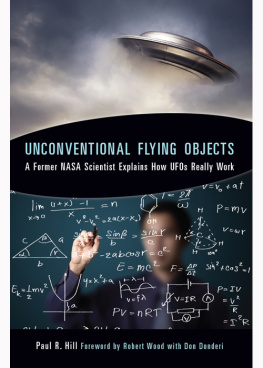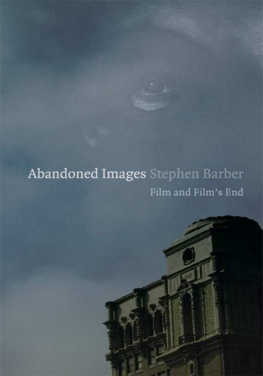Preface
Foreword
Chapter 1: Christmas 1978
Chapter 2: Omens
Chapter 3: The Encounter
Chapter 4: Encore
Chapter 5: Cloak and Dagger Stuff
Chapter 6: On the Up, Going Down
Chapter 7: Down and Out
Chapter 8: Demons and Things
Chapter 9: Documentary-Makers
Chapter 10: Dreams and Schemes
Chapter 11: Good Morning America
Chapter 12: The Press Conference
Chapter 13: Homeward Bound
Chapter 14: A Critical Silence
Chapter 15: Maccabees Findings
Chapter 16: The Debunkers
Chapter 17: More Debunkers
Chapter 18: A Klassical Encounter
Chapter 19: Reflections 1982
Chapter 20: Reflections 2014
Appendix A:
The Valentich Story
Appendix B:
Letters
The Kaikoura UFOs
Lets Hope Theyre Friendly
Quentin Fogarty
With a foreword by Professor J Allen Hynek, director of the Center for UFO Studies

First published in 1982. This ebook edition was published in February 2014. It contains one additional chapter, Chapter 20: Reflections 2014, in which the author speculates on the origin of some of the objects observed and filmed off New Zealands Kaikoura Coast. Peoples titles are described as they were at the time of the original publication.
This book is dedicated to my family and to my many friends who stood by me when the going got rough, especially Steve Levitt and Andrew Flannigan.
Quentin Fogarty, 2014.
The Author

Quentin Fogarty is a respected journalist, film-maker and communications specialist who lives in Victoria, Australia.
On 31 December 1978, he was involved in a UFO encounter off the Kaikoura Coast on the South Island of New Zealand.
The story made headlines around the world and continues to generate interest among UFO proponents and sceptics. In 2008, NBCs Dateline program rated the Kaikoura sightings as one of the top 10 UFO events of all time.
Fogarty remains convinced that no satisfactory, mundane explanation has yet been advanced to explain the sightings.
Lets Hope Theyre Friendly is the remarkable story behind the worldss first verified film encounter with Unidentified Flying Objects.

The data could indicate that intelligence was involved (OI Other Intelligence). For example, the event when flying south when the radar target doubled in size and stayed that way while you looked out the window and saw a light apparently traveling with the airplane, and the associated radar targets before and after no natural phenomenon could account for this and there were no other aircraft, hence could be (probably is ) evidence of OI.
Dr Bruce Maccabee, PH.D, September 2013
NOTE: Colour images from the original UFO film, such as the Lazy Eight image above as well as other material pertaining to the Kaikoura sightings can be viewed at www.kaikouraufos.com
Preface
Early on the morning of 31 December 1978, a number of extraordinary events took place off the New Zealand coast. An Argosy freight aircraft, carrying a television film crew, became involved in a series of UFO sightings that were to make headlines around the world. What made this case so special was the fact that several of the bright objects were filmed and a number were also tracked on radar.
Those on board the aircraft that morning were Quentin Fogarty, a journalist employed by a Melbourne television station, Channel O (since renamed Channel 10); David Crockett, a freelance cameraman, and his wife, Ngaire, a freelance sound-recordist, both from Wellington, New Zealand; Dennis Grant, a New Zealand television journalist, and the flight crew, Captain Bill Startup and First Officer Bob Guard, both from Blenheim, New Zealand.
Three months after that flight, at a press conference in New York City on 26 March 1979, a group of American scientists stated that the light sources captured on film that December morning could not be explained by conventional means. Those at the press conference included Fogarty; Dr Bruce Maccabee, the scientist who headed the inquiry into the case; Professor J. Allen Hynek, director of the Center for UFO Studies (CUFOS); and John Acuff, the former president of the National Investigations Committee on Aerial Phenomena (NICAP).
Dr Maccabee, an optical physicist specialising in laser technology, then worked as a civilian scientist for the United States Navys Surface Weapons Center at White Oak, Maryland. He was also a consultant to NICAP and it was in this capacity that he carried out his investigation into the New Zealand sightings.
Maccabee spent three months on the case before releasing his findings and he travelled to Australia and New Zealand to interview all the witnesses. In addition, he subjected the original film to an exhaustive study and carried out computer-enhancement analysis on copies of the film. He then referred his findings to a further 20 scientists and experts in the fields of optics, physics and radar and they agreed that the light sources could not be explained by any known means.
NICAP, which over a period of 22 years had investigated 20,000 reported UFO sightings, was for the first time prepared to endorse a film as showing a genuine unidentified flying object.
Foreword
Professor J. Allen Hynek
Professor Emeritus of Astronomy
Northwestern University
Midst the continual flow of UFO reports from all over the world, there occasionally occur a few which, in importance, rise like mountain peaks above the surrounding terrain. The New Zealand sightings of December 1978 are an outstanding example of those relatively few UFO sightings that not only capture worldwide public attention but, what is of much greater significance, are of scientific interest and value.
Science demands that whenever possible data be repeatable and instrumentally recorded. However, tornadoes, earthquakes, and a host of other phenomena are examples of events which cannot be brought into the laboratory at will and repeated at the pleasure of the scientist. The UFO phenomenon is one of these, but fortunately it is amenable to instrumental recording when, by happy circumstance, such instrumentation is at hand. This, however, is rare indeed, for no one can predict a UFO event which, like a very bright meteor, just happens. Lying in wait for a UFO to manifest in a given spot has a very low probability of success.
Quentin Fogarty describes vividly the unique circumstances which led to the unprecedented recording on movie film and on radar screens of a remarkable visual display of lights whose brightness and antics have to date found no viable rational explanation, despite the frantic efforts of the scoffers to conjure them up. Indeed, the lengths to which such have gone in efforts at explanation provide spritely comedy relief to this otherwise serious recital of astounding UFO events. According to these explainers, the lights were due to: flocks of mutton birds heading inland to mate, moonlight reflecting off cabbage patches, Venus when below the horizon, Jupiter in the wrong part of the sky, meteors which hadnt quite burned up in the atmosphere, Japanese squid boats that were far out to sea ...!
In my long association with the UFO subject, which reaches back well over 30 years, one outstanding fact has impressed me: the UFO experience, whatever its cause, is above all a human adventure. It is actually a frightfully human sort of thing, pulling out many of the stops on the keyboard of human emotions and reactions: awe, fear, wonder, the sense of the presence of an unknown world, of beauty and spectacle, and of extreme puzzlement. Witnesses have reported standing transfixed as the UFO event unfolded before them, not knowing whether to stay, but often unable to run, sometimes reporting as one airman did to me, that it seemed as though he were looking into another world. The UFO experience tests ones sense of reality and introduces one to an awareness that our smug concepts of everyday reality may have to be somewhat altered, that we may have to accept that there are indeed more things in heaven and earth than are dreamt of in our philosophies.

